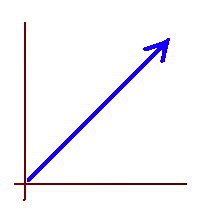It was a small room, about 12 feet by 12 feet.
The back wall was orange, and its lower part was horizontally covered by a desk.
In the middle of the orange wall there was a picture of a green car. I thought that was an interesting color combination.
Looking at the picture on the wall, I wondered how bigger the visible part of the wall (including the picture) was, in area, in relation to the area of the picture.
The horizontal length of the wall was about two-and-a-half times the length of the picture, while the hight of the visible part of the wall was about three times the height of the picture.
Putting
b = length of the picture
h = height of the picture
a = area of the picture
B = length of the wall
H = height of the visible part of the wall
A = area of the visible part of the wall (including the picture)
we have, approximately
B = 5b/2, and H = 3h
therefore
A = BH = (5b/2)(3h) = 15bh/2 = 15a/2
So the proportion between those two areas is 15/2, 0r 7.5
Then I wondered what the proportion would be between the diagonals of those same two rectangles. As it turns out, when the two rectangles (the wall and the picture) do not have the same shape, the proportion between their diagonals depends not only on how many times the sides of the wall are on relation to the sides of the picture, but on the precise shape of the reference rectangle, as well.
If we use
d = measure of the picture’s diagonal
D = measure of the diagonal of the visible part of the wall
Then we have
D = sqrt(B2 + H2)
= sqrt((5b/2)2 + (3h)2)
= sqrt(25b2/4 + 9h2)
while
d = sqrt(b2 + h2)
The coefficients of b2 and h2 inside the square root in the expression for D are not the same, so we cannot simplify that expression completely just in terms of d.
If we introduce a new constant, k, to represent how many times the height of the picture equals its length, then we can write
b = kh
In that case, the diagonals of the two rectangles can be expressed as
d = sqrt((kh)2 + h2) =
= sqrt(k2•h2 + h2) =
= h•sqrt(k2 + 1)
D = sqrt(25(kh)2/4+ 9h2) =
= sqrt(25k2h2/4 + 9h2) =
= h•sqrt(25k2/4 + 9)
This shows the proportion between D and d being dependent on k, the proportion between h and b, because
D/d = sqrt(25k2/4 + 9) / sqrt(k2 + 1)
and this is a function of k that is not constant.





No comments:
Post a Comment